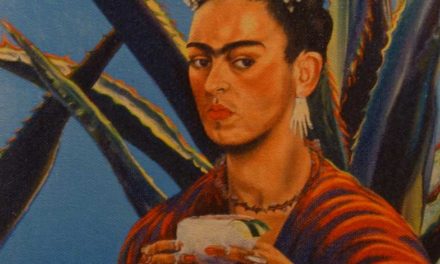The faithful sit in silence before a Spanish colonial crucifix. They have come to pray, and many are there because they believe in miracles. The Chapel of Miracles, on the Westside of San Antonio, can only accommodate eight to ten people at a time. With December the busiest time of the year for the tiny chapel, the eight families who care for the chapel, all volunteers, make extra sacrifices so that everyone can have a special place to visit with God.
The visitors say their prayers on their knees, and while some have been there countless times, others pray there for the first time. It is a family chapel shared with the world and no religious officials conduct services there. Worshipers come from near and far and plea for a religious miracle in many different languages. Many pray for a health or economic miracle, and the worshipers most often recite prayers in Spanish.
The Chapel of Miracles had its beginnings over two hundred years ago as a place where family members and neighbors could worship. Juan Francisco Ximenes, whose family first build the chapel in the late 1790s, came to San Antonio in the late 1700s from Saltillo, Mexico and occupied land the Spanish Crown had granted them west of San Pedro Creek.
There are several Ximenes families in San Antonio. Two of them came with the first Governor of Texas, Don Martin de Alarcon, in 1718. No one is certain if the earlier Ximenes families involved in the founding of San Antonio are related to Juan Francisco Ximenes. However, because of the unusual spelling of the Ximenes name, such relationships are possible.
The story of how the Christ figure on the crucifix came to the family chapel is a story based on oral history passed down over seven generations of the descendants of the Juan Francisco Ximenes family. Following the secularization of the missions in 1793, a crucifix, which historians now believe to be the one at the Ximenes chapel, was moved from the Alamo to San Fernando Cathedral. When war broke out between Spanish Royalist forces and local San Antonio Tejanos in 1813, a crucifix, nearly five feet tall, was moved to the private chapel of Ximenes and his wife Teodora de Jesus Rodriguez. The crucifix is one of the few surviving colonial relics of the Spanish period in Texas.
We are aware that many of the original Mestizo settlers of San Antonio occupied a neighborhood west of the San Pedro Creek. This area also had a large number of Native American residents. Historians have not documented the westward movement of Latino families over the first two centuries of settlement, and we know little about how far west they resided by 1813 when the initial Ximenes chapel was built. Over the next hundred years, urban sprawl threatened many older Westside homesteads, but the heirs to the Ximenes family made sure that the small chapel survived urbanization. Because of their efforts, it is one of the oldest structures in the western part of San Antonio.
In his book Genealogies of Early San Antonio Families, Frederick C. Chabot notes that the “Milagro (Miracle) Chapel on Ruiz Street” was erected on the original site chosen for San Antonio de Valero (the Alamo) in 1718. The original settlers remained at western banks of the San Pedro Creek for only a year, moving the following year to the banks of the San Antonio River where the Alamo is currently located. According to historian Charles Ramsdell, the crucifix appeared in the early inventories of the church at Mission San Antonio de Valero.
Family volunteers make the chapel’s daily opening possible. Heirs to the Ximenes family assure that this place of worship is maintained and open to the public. When I arrived there last Sunday, my good friend Rosalinda Trevino Berlanga was there, joined by two of her cousins. They had spent much of the day preparing the chapel for the upcoming Christmas visitations, which attract visitors from throughout the United States and Mexico.
Rosalinda, who was been recognized nationally for her volunteer work, believes in giving back. Her brother, Arthur Trevino, believes that the chapel is important to the faithful. Volunteers, along with many Ximenes cousins, work at the chapel several days a week. Both Rosalinda and Arthur Trevino attended Fox Tech High School–Arthur was in my class– and Rosalinda graduated later. They understand that without dedicated caretakers the chapel could not be open to the public. Since there is no charge to enter the chapel, family volunteers make worship possible.
San Antonio is a better city because of individuals like the Trevinos and their relatives who believe strongly in volunteerism. In giving back to their community, they make sure that many people know that their neighbors and the city care about them. The spirit of giving is strong in this family and inspires everyone to try to do more
The Spirit of Giving and Serving Others










